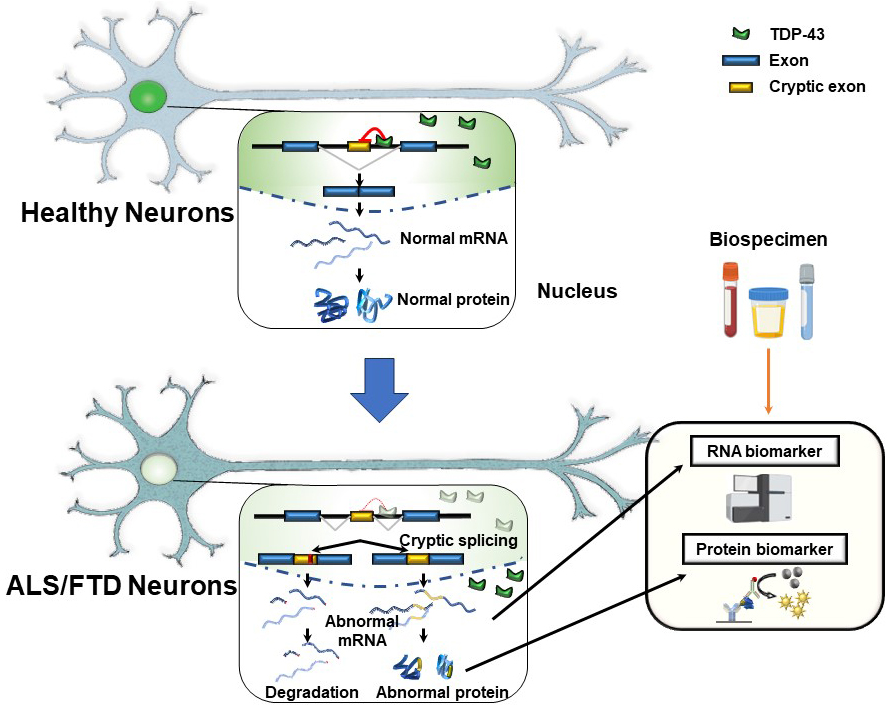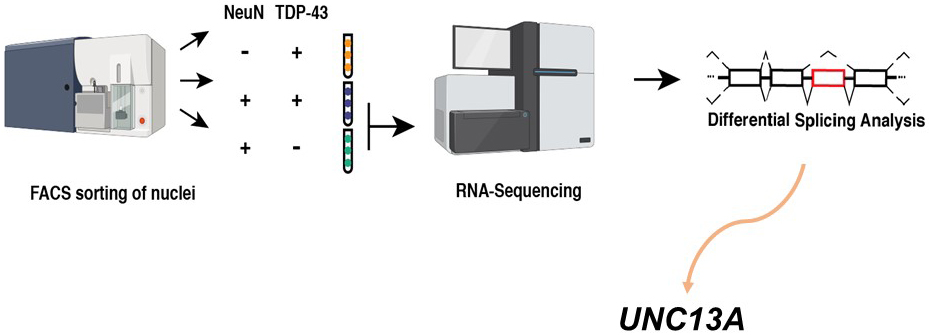Figure 1. The mechanism regulating the splicing events by TDP-43 in the nucleus and cryptic splicing events as potential biomarkers.
In healthy neurons, TDP-43 localizes to the nucleus. Cryptic exons are within introns that should not be included in the mature mRNA following splicing. Nuclear TDP-43 represses the inclusion of cryptic exons. Nuclear depletion of TDP-43 in ALS/FTD neurons leads to cryptic splicing, generating abnormal mRNA and abnormal protein. Cryptic splicing events can function as novel biomarker candidates, which reflects TDP-43 dysfunction. These biomarkers could be RNA- and protein-based. This figure modified from Reference 8.
From: Abnormal Splicing Events due to Loss of Nuclear Function of TDP-43: Pathophysiology and Perspectives

Figure 2. Detection of UNC13A cryptic exon.
The identification process of the UNC13A abnormal splicing variant, including cryptic exon in TDP-43-negative neuronal nuclei using FACS. (-)/(+) in the figure means negative/positive NeuN (Neuronal-Nuclei, neuronal marker) antibody or TDP-43 antibody signal, respectively, when FACS sorts human brain-derived nuclei. This figure modified from Reference 12.
From: Abnormal Splicing Events due to Loss of Nuclear Function of TDP-43: Pathophysiology and Perspectives


